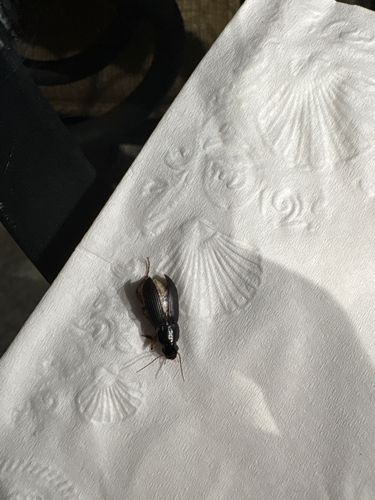Click Beetle (possibly Eyed Click Beetle or a similar species)
Scientific Name: Family Elateridae (specific species difficult to determine from image alone)
Order & Family: Order Coleoptera, Family Elateridae
Size: Most common species range from 12 mm to 18 mm (0.5 to 0.7 inches) in length, though some can be larger.

Natural Habitat
Typically found in forests, grasslands, gardens, and agricultural fields. Larvae (wireworms) live in soil, rotting wood, or under bark, while adults are often found on plants or attracted to lights at night.
Diet & Feeding
Adult click beetles generally feed on nectar, pollen, decaying plant material, or fungi, and some are predators of smaller insects. Larvae (wireworms) are primarily soil-dwellers that feed on roots, seeds, and subterranean stems of plants, but some are predatory.
Behavior Patterns
Known for their unique 'clicking' mechanism; when overturned, they can snap a spine on their prosternum into a groove on their mesosternum, producing an audible 'click' and flipping into the air to right themselves. They are usually nocturnal or crepuscular and are attracted to light.
Risks & Benefits
Adult click beetles are generally harmless. However, their larvae, known as wireworms, can be significant agricultural pests, causing damage to crops such as corn, potatoes, and wheat by feeding on roots and seeds. Environmentally, some predatory wireworm species can help control other insect pests, and adults contribute to pollination through their feeding habits.
Identified on: 9/22/2025